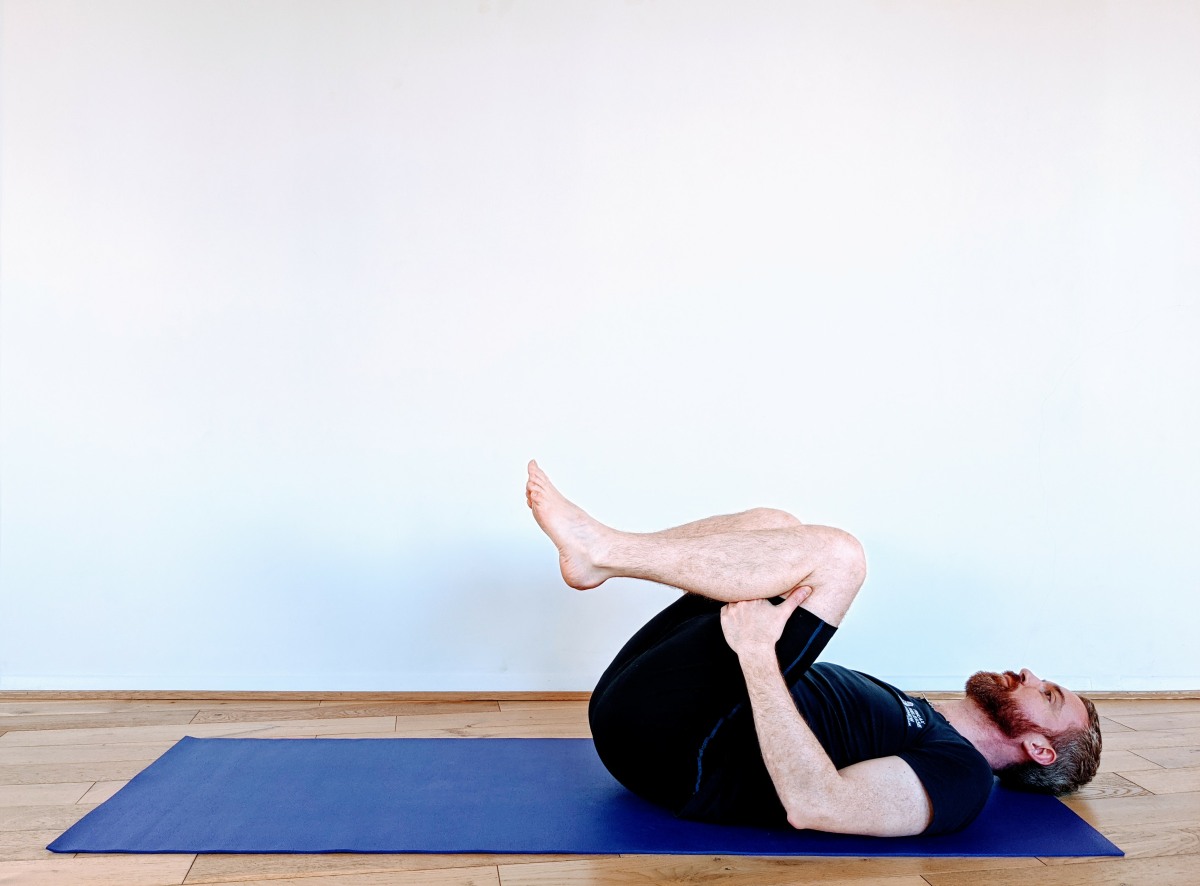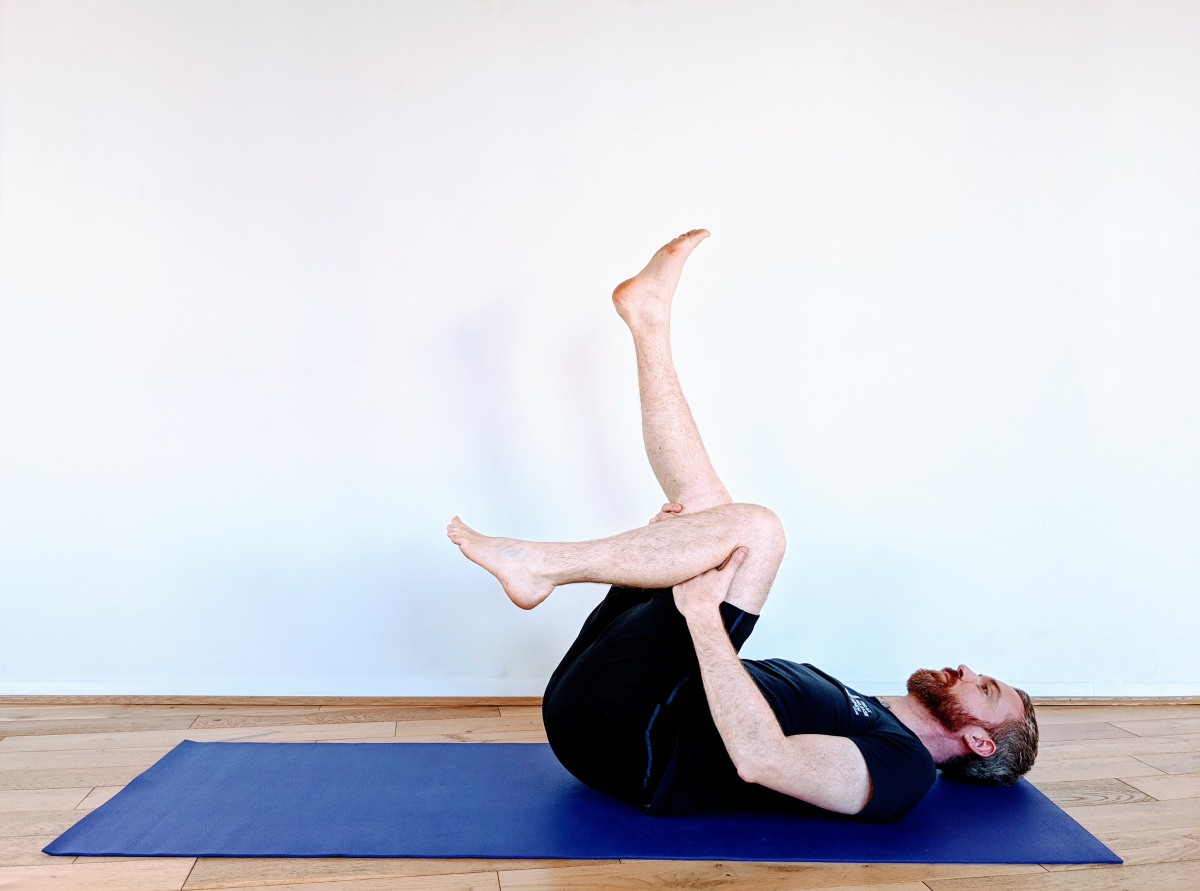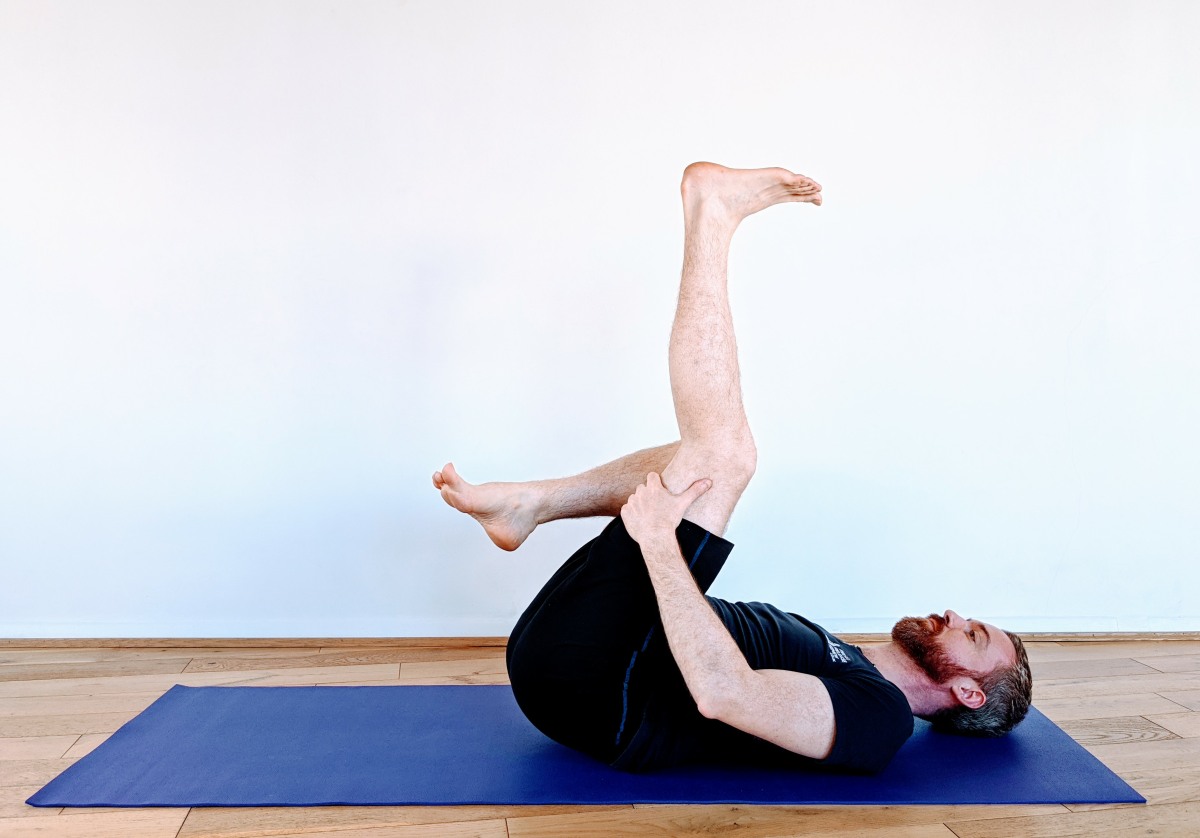This is a movement that I do to help maintain the health and mobility of my sciatic nerve. This nerve runs from the lumbar spine, through the pelvis, down the back of the leg all the way to the foot. It includes the longest cells in the body, which are the single nerve cells that reach from the spine to the big toe.
Nerves like movement and can elongate to approximately 10 per cent of their length. They do not like being held at at stretch, which is why I dislike the runners stretch of hamstring/calf in one go as it is mostly the nerve you are stretching when you lift the foot up.
This movement is really good to try if your hamstrings are always tight and they never seem to lengthen no matter how much you stretch them. The nerve might be being tethered somewhere along it’s path and what you feel is a stretch is the nerve and not the muscle.
IF you have any potential issues with the intervertebral disks and low back pain I would avoid this motion unless you have been given the all clear by a medical professional.
Equipment
None really necessary, but something soft to lie on is nicer than a wooden floor (folded towel or yoga mat).
Part 1: Loose feet.
Steps
- Draw both legs up towards you chest and hold under the knees, letting the calfs fold over.
- Keeping your knees here, straighten one knee so the calf reaches upwards to your maximum comfortable straightness. Try to keep the foot soft and floppy, not lifting the toes towards the knees (yet)
- Don’t hold it there, but bend the knee and return to the folded in position.
- Then repeat with the other leg, straightening that knee until you reach your maximum comfortable straightness.
- Don’t hold it, and bend the knee.
- Repeat one leg at a time for approximately 15-20 cycles of both legs. I imagine it’s a slow walking on the ceiling.
Things to think about
- This is a continuous motion.
- This part keeps the feet soft as we are trying to mobilise the nerve around the buttocks, hamstrings, and backs of the knees.
- Getting the knees straight isn’t part of the aim, it’s motion within comfort.



Part 2: Foot dorsiflexion
- Continuing on from the first part, you continue the walking motion.
- However, when the knee is as straight as you can comfortably get it you dorsiflex the foot (bring the toes towards the knee)
- The relax the foot, and bend the knee.
- Repeat on the other side
- Again repeat this approximately 15-20 times on each side.
Things to think about
- This is a continuous motion and there is no need to hold any extreme position.
- Adding in the foot dorsiflexion brings the whole length of the sciatic nerve into the movement.


Compare
So having done this movement, it might be interesting to see if there is any improvement in your hamstring length. If there is an improvement then this motion is of help to you as the nerves need mobilisation. If there is no improvement, there is little harm in making sure that the nerves have mobility.
Video
Here’s a short video of me running though the exercise. Click on the four arrows (next to the word vimeo) if you want to make it full screen.
These movements should not cause additional pain or discomfort, or cause new pain. If they do then please stop and get some advice on what is happening to your body.
Thanks for reading this my lovely Interonauts.
Tim


